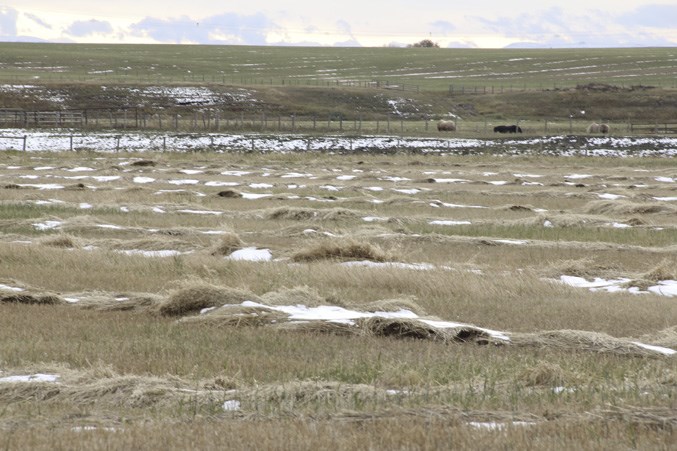There could be an agricultural emergency declared in the MD of Foothills if conditions don’t improve soon. “With the snow we’ve had here and we have so much for crops out in the field still, and then as well the drought situation in regards to forage harvest and just drought overall in the last three years, this is where we are,” said Jeff Porter, agriculture services manager for the MD of Foothills. According to the Rural Municipalities of Alberta (RMA), a municipal declaration of an agricultural disaster is intended only to inform residents and bring awareness to the issue. It does not trigger provincial declarations or provide access to government funding. An agricultural disaster is based on extreme weather such as flood or drought resulting in poor yields by percentage. The RMA reporting chart indicates if up to 10 per cent of crops are affected, then yields are near normal and above. If between 10 to 25 per cent are affected, diminished yields are expected; between 25 to 50 per cent means the region is in pending disaster; and if 50 per cent or more of crops are affected the municipality is in a definite disaster. It is not yet clear where the MD stands, said Porter. “We’re just in the kind of waiting game to see what happens, but we want to be prepared for it and we want to make sure our producers are looked after one way or another,” he said. Some ag producers in the area have taken a double hit this year, he said. The MD of Foothills wasn’t included in the federal Livestock Tax Deferral program list in September. According to the government’s website, the tax deferral program allows farmers in one of the prescribed regions who are forced to sell part of their herd due to drought or flood to defer a portion of their sale proceeds to the following year. In order to defer income, the breeding herd must have been reduced by at least 15 per cent. Many cattle breeders in the region have been affected this year by a lack of feed caused by drought, forcing some herds to be culled. Porter said he’s pushing hard to be included in the new list of prescribed regions, which will be announced in December. “We’ve been pushing hard to get included in that,” he said. “We should be, by the drought mapping, I’m not sure why we were excluded. “We’ve had a lot of inquiries from producers and we’ve been inquiring to Ottawa because it’s Ottawa that makes the decisions and doesn’t take in local input.” Between drought through the summer and a wet and snowy fall making it difficult to get crops out of the ground, he said the outlook isn’t great in the MD, though there is still some hope. The long-term forecast now shows warmer weather on the horizon with highs potentially into the double-digits, which could help dry things up enough to finish harvest, he said. “There’s still going to be a definite impact on quality for producers and they’ll be losing on that side of the equation for their crops,” said Porter.




